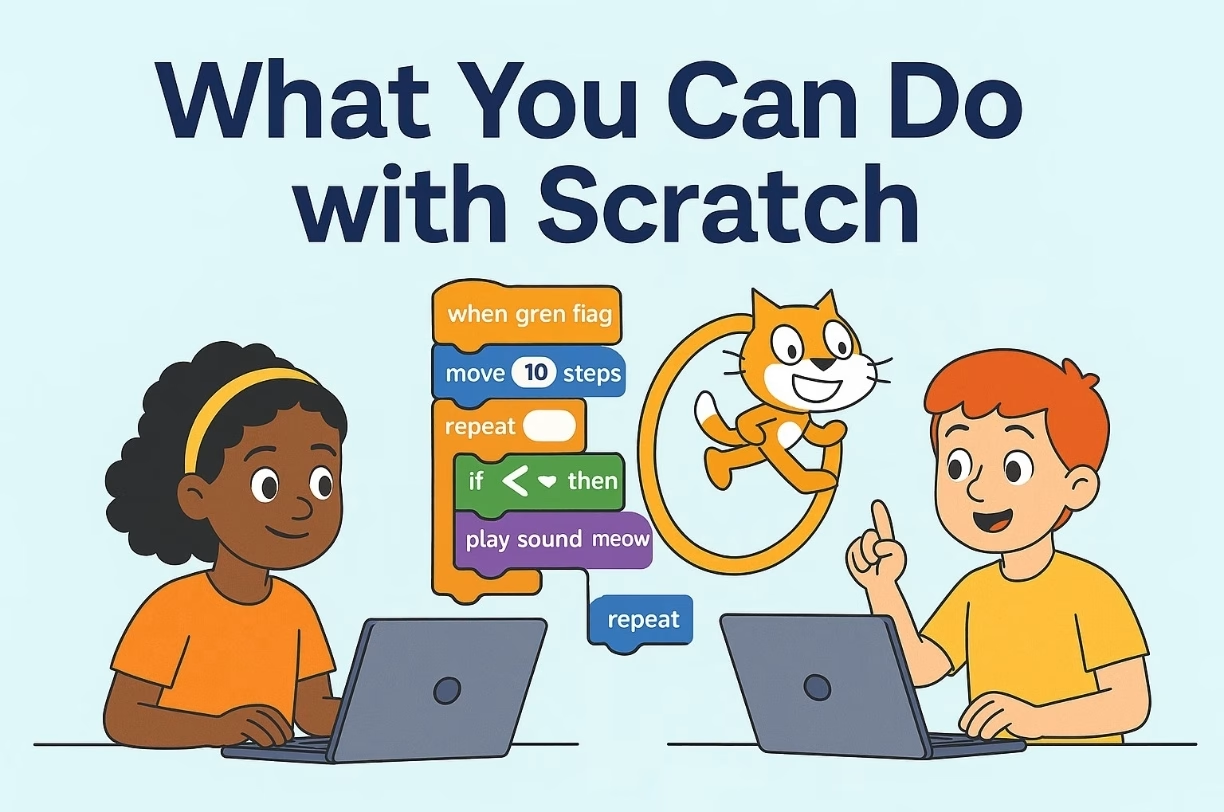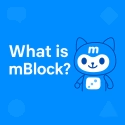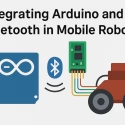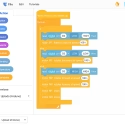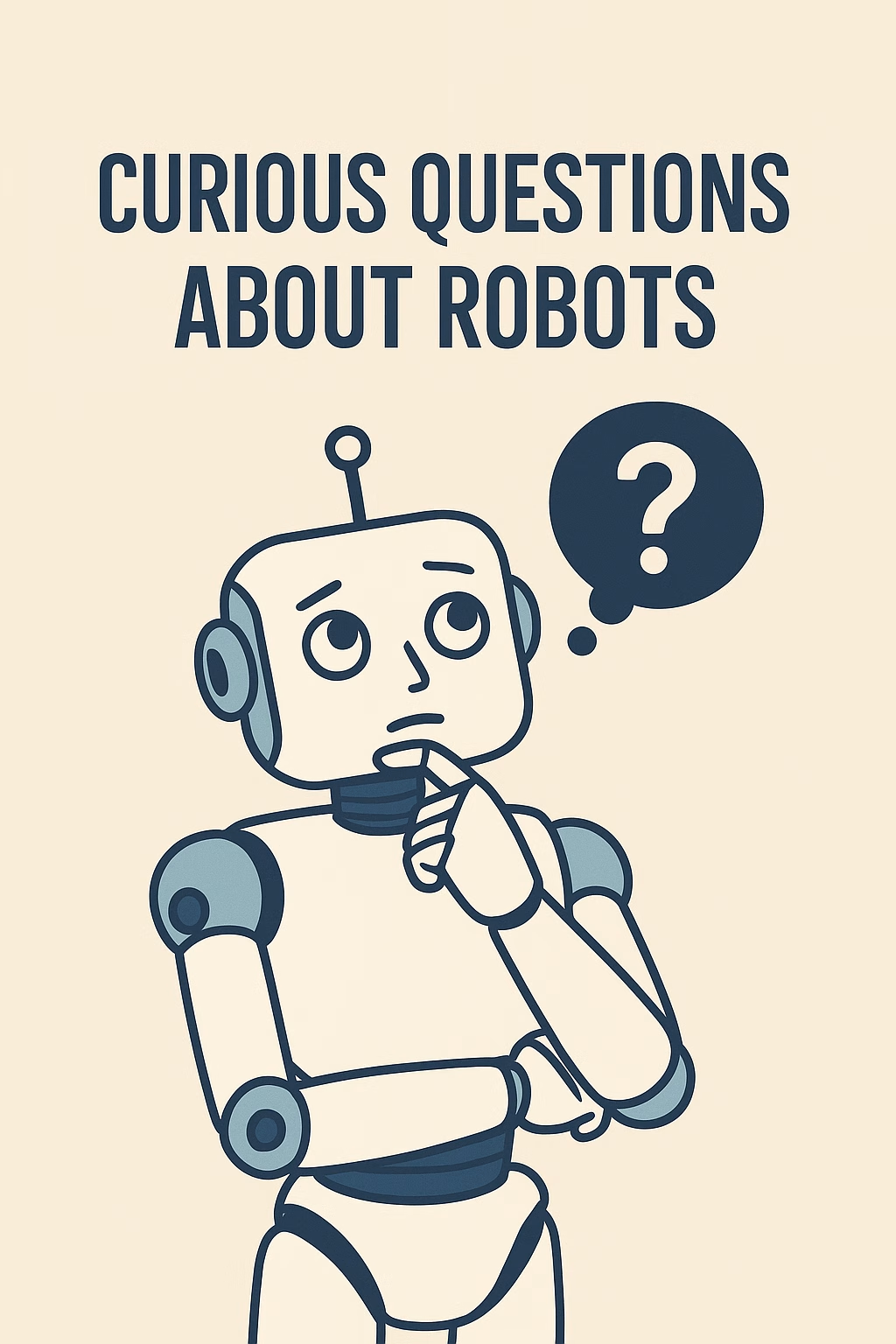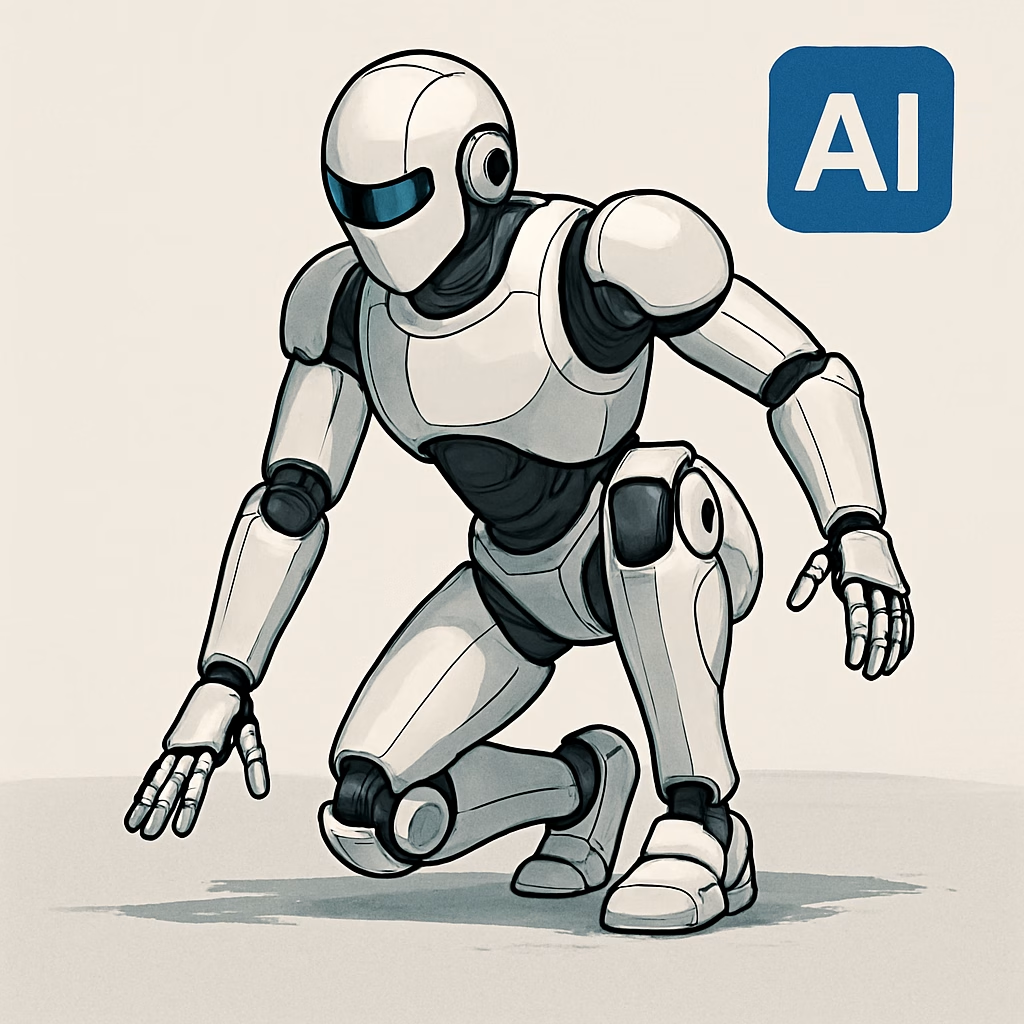A Creative Guide for Beginners and Educators
📌 Target Audience: Students (Age 8+), Educators, Hobbyists
🧠 Skills Gained: Logical thinking, creativity, storytelling, problem-solving
🛠 Platform: Scratch (Browser-based, no installation required)
🎯 What Is Scratch?
Scratch is a free, visual programming language developed by the MIT Media Lab. It allows users to create interactive stories, games, animations, simulations, and more — all by simply dragging and snapping colorful blocks together.
No coding experience needed! Scratch makes programming fun, intuitive, and visual.
💡 What Can You Create With Scratch?
1. 🎮 Interactive Games
- Catch the Apple: Move a basket left and right to catch falling apples. Great for teaching variables and conditionals.
- Maze Runner: Use arrow keys to move a character through a maze. Teaches logic and event-driven programming.
- Space Shooter: Build a basic space game with scoring, health bars, and enemy AI.
🧩 Core Concepts: Events, motion, sensing, variables, loops
2. 🎨 Animated Stories
- Talking Animals: Make two animals talk using speech bubbles and timed animations.
- Choose Your Adventure: Let players decide what happens next in the story. Adds interactivity through branching logic.
📖 Core Concepts: Broadcasting, timing, costumes, sound effects
3. 🎵 Music and Sound Projects
- Virtual Piano: Use keyboard inputs to play different sounds.
- Rhythm Game: Press the right key to match the beat.
🎧 Core Concepts: Sound blocks, timing, loops, inputs
4. 🧪 Simulations and Experiments
- Lunar Gravity Simulator: Drop objects with different gravity values on the moon vs. earth.
- Ecosystem Simulator: Model a simple food chain with predators and prey.
🔍 Core Concepts: Variables, conditionals, mathematical operators
5. 🤖 Robotics & Hardware Integration (with Extensions)
- Use Scratch with:
- micro:bit
- LEGO Mindstorms
- Makey Makey
- Arduino (via mBlock)
💡 Example: Program a micro:bit to show smiley faces when you press a button or send signals to a Scratch character to dance.
🔄 Example Project: “Cat vs Ball” Game
🟢 When Green Flag Clicked
🔁 Forever
If [ball touching sprite1] then
Change score by 1
Play sound [pop]
Go to random position
Goal: The user controls a cat that chases a bouncing ball. Each time the ball is caught, the score increases.
🏫 Scratch in Education
✅ Benefits for Educators:
- Encourages creative thinking and digital literacy
- Fits into STEM and STEAM curriculum
- Enables project-based learning
- Supports cross-disciplinary integration (math, art, science, music)
📚 Classroom Project Ideas:
| Subject | Project Idea |
|---|---|
| Math | Times Tables Quiz Game |
| Science | Solar System Animation |
| Art | Interactive Digital Drawing Tool |
| Language Arts | Animated Poetry Recital with Voice-overs |
🌍 Scratch Community
- Millions of shared projects
- Remix-friendly platform
- Free educational resources
- Active forums and educator networks
Visit: https://scratch.mit.edu/explore
🧰 Bonus Tools That Work with Scratch
| Tool | Description |
|---|---|
| mBlock | Scratch + Arduino programming |
| Tinkercad | Design and simulate circuits + Scratch logic |
| micro:bit | Add sensors and displays to Scratch projects |
| ScratchJr | For younger kids (ages 5–7) |
1. 🏫 Education & Schools
- Elementary & Middle Schools: For teaching basic programming and logical thinking.
- High Schools: Used in introductory computer science and robotics.
- Cross-Curricular Learning: Combines coding with art, music, science, and math.
Example:
Create a Scratch animation to explain how the water cycle works or simulate a math quiz game.
2. 🎓 Coding Clubs & Maker Spaces
- Scratch is widely used in Code Clubs, STEM camps, and Maker Spaces for young creators.
- Encourages teamwork, iterative design, and public sharing.
Example:
A team project where students build an interactive trivia game based on environmental awareness.
3. 👨🏫 Teacher Training & Curriculum Development
- Teachers use Scratch to:
- Design digital activities
- Teach logic & loops
- Encourage creativity through storytelling and game-making
Example:
Teachers develop a Scratch-based “choose your own adventure” storytelling unit for language arts.
4. 🧠 Special Education
- Visual, drag-and-drop interface is ideal for neurodiverse learners.
- Helps with:
- Attention and sequencing
- Cause-and-effect learning
- Expressing ideas creatively
Example:
A student creates an animated avatar that explains their daily routine or emotions.
5. 🎨 Digital Arts & Storytelling
- Scratch allows for full visual expression:
- Create original characters (sprites)
- Animate scenes
- Sync audio and narration
Example:
Build a music video or comic-style animation using your own artwork and voiceovers.
6. 🤖 Hardware & Physical Computing
- Extensions make it possible to control real-world devices:
- LEGO robots
- micro:bit sensors
- Makey Makey
- Arduino (via mBlock)
Example:
Control a Scratch cat sprite by tilting a micro:bit or use a banana keyboard with Makey Makey.
7. 🌍 Online Learning & Sharing
- Scratch has a massive online community:
- Share and remix projects
- Learn from others
- Participate in Scratch design challenges and games
Example:
Join a Scratch Studio themed around “Saving the Ocean” and contribute your project to a global initiative.
8. 📱 Mobile-Friendly Learning (ScratchJr)
- For early learners (ages 5–7) with tablet devices.
- Helps children learn sequencing, patterns, and creative expression before they read fluently.
🧪 Lesson Plan: “Catch the Apple” – A Beginner Scratch Game
🎯 Objective:
Students will create a simple game where a basket catches falling apples. They will learn:
- Motion and event blocks
- Conditionals (if-then)
- Scorekeeping with variables
⏱ Duration:
45–60 minutes (1 lesson)
🧰 Materials:
- Computer or tablet with internet access
- Scratch account (or offline editor)
- Projector (optional, for demo)
📚 Learning Outcomes:
- Understand how sprites interact
- Use loops and conditionals
- Create and update a variable
- Design a working game with input controls
📝 Step-by-Step Instructions:
1. Set Up the Stage
- Open scratch.mit.edu
- Delete the Scratch cat
- Click Choose a Sprite → Apple
- Click Choose a Sprite → Basket
- Use Choose a Backdrop → Nature or Schoolyard
2. Code the Apple (Falling Logic)
🟢 When Green Flag Clicked
Go to x: (pick random -200 to 200) y: 180
🔁 Forever
Change y by -5
If < touching [Basket v] > then
Change [Score v] by 1
Go to x: (pick random -200 to 200) y: 180
If < y position < -150 > then
Go to x: (pick random -200 to 200) y: 180
3. Code the Basket (Control with Arrow Keys)
🟢 When Green Flag Clicked
🔁 Forever
If < key (right arrow) pressed > then change x by 10
If < key (left arrow) pressed > then change x by -10
4. Add a Score Variable
- Go to Variables → Make a Variable → Score
- Set
set Score to 0at the beginning of the game.
🎨 Optional Extensions:
- Add sound when apple is caught
- Add timer or “game over” condition
- Use costumes to animate falling fruit
🧑🏫 Teacher Tips:
- Use live demo and build together with students
- Encourage students to remix and add their own elements
- Let advanced students create a “banana” that reduces score
